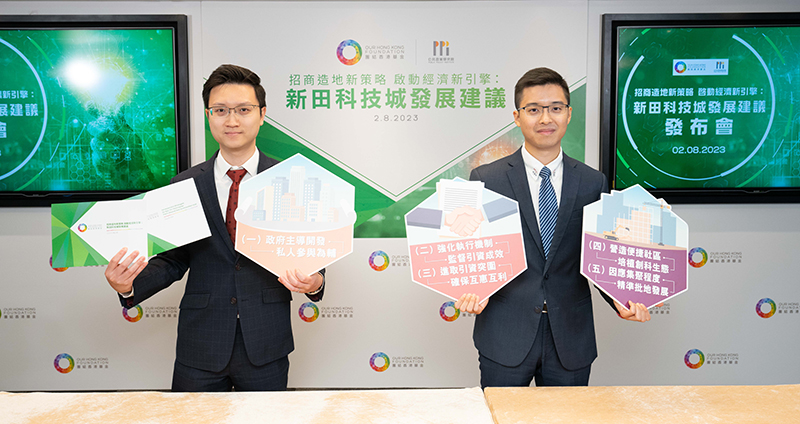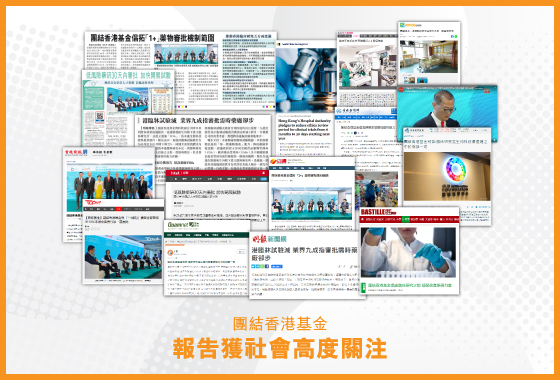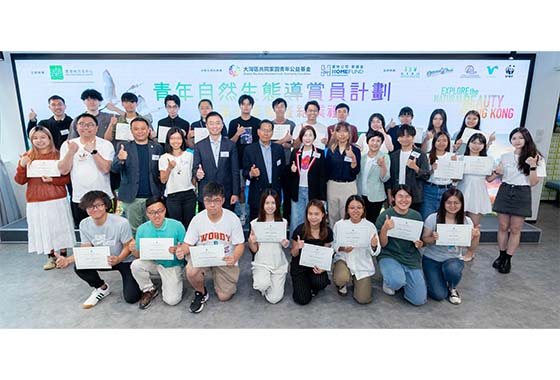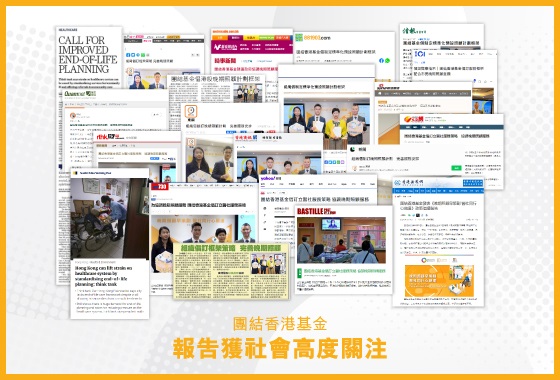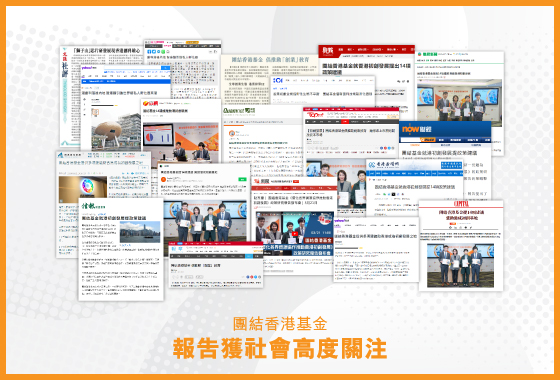Our Hong Kong Foundation Development Strategies for San Tin Technopole: From Ground Zero to Innovation Hub
Our Hong Kong Foundation
Development Strategies for San Tin Technopole:
From Ground Zero to Innovation Hub
(2 Aug 2023, Hong Kong) Our Hong Kong Foundation (OHKF) released its latest policy advocacy report entitled Development Strategies for San Tin Technopole: From Ground Zero to Innovation Hub today. The report focuses on three areas, namely lead development entity, business and investment attraction, as well as land allocation and development. Through analysing various case studies of successful innovation and technology (I&T) parks globally, including Mainland China, Singapore, the United Kingdom, and the United States, the report crystalises relevant development models that provide valuable references for the HKSAR Government.
Combining global experiences with the local context, OHKF put forward 13 policy recommendations under 5 directions. Besides a smooth launch for San Tin Technopole (STT), these recommendations aim to realise the vision set out in the Hong Kong Innovation and Technology Development Blueprint, and forge a new engine for Hong Kong’s socio-economic development.
Key Question 1: Who should be the lead development entity?
(Direction 1) Government-led development supplemented by private participation
With reference to past experience in developing new towns, the Government should be the lead development entity for STT. Nevertheless, considering the fragmented land ownership in STT, with more than half of the land in Phase 1 Development being privately owned, suitable private participation will enhance the overall development efficiency. It is therefore proposed that adjustments be made to the existing Enhanced Conventional New Town Approach to encourage more private participation and assist the Government in its development efforts.
Recommendation 1: Provide concessionary land premium for in-situ land exchange, subject to securing prospective I&T enterprises. We propose to extend the scope of in-situ land exchange to include I&T use in order to expedite I&T development. As that brings social benefits, the Government should provide concessionary land premiums as an incentive. Nevertheless, landowners shall first secure the partnership of prospective leading I&T enterprises, which should be subject to the Government’s approval.
Recommendation 2: Allow landowners to construct talent accommodation, pegged to the scale of I&T operations on their respective sites. Considering the need to provide sufficient and affordable quality housing for I&T talents, we propose that applicants for in-situ exchange for I&T use can be allowed to construct talent accommodation. However, the maximum domestic gross floor area (GFA) shall not exceed 10% of the GFA for I&T use, and the units shall be for lease only and not for sale.
Recommendation 3: Introduce co-investment via the issuance of STT Development Bonds. Currently, compensation for land resumption is only settled in cash. However, we propose that the Government issue STT Development Bonds as an alternative compensation option, allowing landowners to become co-investors in STT while reducing pressures on public finances. Interest payments could consist of both fixed and floating rates that are linked to a basket of key performance indicators (KPIs) of STT, allowing bondholders to share the upside.
Key Question 2: How to attract investments and enterprises?
(Direction 2) Strengthen implementation mechanisms and monitor the effectiveness of investment attraction
Recommendation 4: Form a new business-centric working group on STT for swift and precise investment attraction. Amidst the dynamic business landscape, flexible decision-making and rapid response are key, as the Government must keep pace to avoid missing out on opportunities. It is thus proposed to form a working group on STT under the strategic high-level Steering Committee on Northern Metropolis. As a one-stop coordinating mechanism operating on commercial principles, the working group can be headed by the Financial Secretary or Deputy Financial Secretary, with the Innovation, Technology and Industry Bureau serving as the secretariat. Members comprise all relevant bureaux whose portfolios involve the needs of incoming enterprises and talents, ensuring a fast-paced and coordinated response.
Recommendation 5: Set KPIs for the new working group to monitor its effectiveness. For the working group to be successful, it is necessary to create common goals for its members and to set objective KPIs to monitor its outputs. Therefore, we propose setting KPIs in two aspects: in terms of investment commitments, KPIs include businesses’ fixed asset investment and total business expenditure; in terms of contribution to the economy, KPIs include industry value added and the number of jobs created.
(Direction 3) Stand out via aggressive investment attraction while ensuring mutually beneficial partnerships
Recommendation 6: Offer tailor-made incentives and a compelling business proposition to stand out from the competition. As competition for investment intensifies globally, tax incentives and concessionary land prices have become points of parity. In order to establish points of differentiation, the Government could provide tailor-made incentives to meet industry- and company-specific needs. More importantly, a compelling business proposition needs to be offered, such as market access and significant business opportunities that will be brought about by institutional harmonisation within the Greater Bay Area.
Recommendation 7: Leverage key decision influencers for all-round pitching, amplifying the reach and effectiveness of investment attraction efforts. Government officers might not have the industry knowledge and direct connections across multiple fields. Thus, a more aggressive strategy is to leverage the connections and market awareness of local experts and senior executives of multinational corporations. Through their respective pitching, the chances of influencing key decisions of prospective multinational corporations can be increased.
Recommendation 8: Assign enterprises performance-based KPIs to ensure mutually beneficial partnerships. In providing preferential policies to incoming enterprises, the Government expects that they will bring substantial socio-economic benefits to the local community. It is therefore emphasised that enterprises should reciprocate by meeting performance-based KPIs and contribute to Hong Kong’s long-term economic and technological development, thereby forming a mutually beneficial partnership.
Key Question 3: In what ways should land be disposed of and developed?
(Direction 4) Foster a liveable community and vibrant I&T ecosystem
Recommendation 9: Enhance transport connections of the I&T land through advanced planning. Currently, a large portion of I&T land within STT has no planned railway connections, and inconveniences commuting between the I&T land and residential areas are hence foreseen. Thus, we propose a medium-to-light capacity rail system to connect the I&T land to the Lok Ma Chau, San Tin, and HSITP Stations. As an interim solution before the completion of the Northern Link and its Spur Line, alternatives can be a network of bus services or an Autonomous Rail Rapid Transit system.
Recommendation 10: Kickstart the development of the I&T ecosystem with government research agencies and academic institutions as anchor institutions. Unlike other organically developed I&T parks, STT has to be built from scratch. Hence, top-down support by establishing the presence of anchor institutions is extremely important for kickstarting the development of the I&T ecosystem. It is therefore proposed that government research agencies and academic institutions should be first brought in. These will in turn attract multinational corporations and other smaller-scale enterprises, leading to the formation of industrial clusters.
Recommendation 11: Implement new urban design concepts to create a liveable mixed-use community. The new generation of global I&T talents places value on work-life balance and prefers to stay in dynamic communities that can fulfil their daily working and living needs. Hence, we propose that vertical building designs can provide space for a mix of uses, including housing, office, recreational and retail spaces. Horizontally, community designs can be enhanced to foster a 15-minute living circle that embraces the “work-live-play-learn” concept.
(Direction 5) Land allocation and development based on ecosystem maturity
Recommendation 12: Adopt a multitude of land allocation methods, subject to ecosystem maturity and industry needs. Considering the need to bring in leading enterprises at the ground zero stage of STT, we propose that the Government adopts direct land allocation to facilitate negotiation and devise customised terms. However, a general policy framework should first be promulgated to ensure transparency. Subsequently, restricted tender could be used to recruit complementary enterprises in the industrial chain. With the I&T cluster taking shape, concept and price tender can be used to bring in unique concepts and designs. Eventually, as STT establishes its reputation as an international I&T hub, land could be disposed of by open tender to maximise the land sale revenue.
Recommendation 13: Design buildings based on enterprises’ needs to avoid becoming “building waste”. Summarising lessons learnt from unsuccessful foreign I&T parks, the lack of in-depth industry study and tailor-made designs would often lead to unusable showcase projects, thus becoming “building waste”. Hence, we emphasise the need to fully understand the spatial demands of enterprises in different sectors of the industrial chain, especially those undertaking cutting-edge research and high-end manufacturing.
OHKF President Dr Jane Lee said: “As the cornerstone of the “Twin Cities, Three Circles” spatial concept in the Northern Metropolis, San Tin Technopole is of great significance in fostering Hong Kong-Shenzhen cooperation, promoting synergistic development of the Greater Bay Area, and capitalising on the opportunities brought about by national development. Amidst the background of intense global competition, I&T plays an increasingly important role in driving economic growth. Thus, San Tin Technopole must correspond to the needs of Hong Kong’s future industry development, create greater socio-economic value, and generate stronger synergy within the Greater Bay Area.”
OHKF Vice President & Co-Head of Research Mr Ryan Ip remarked: “The success of San Tin Technopole requires a proactive Government-led development approach, supplemented by private participation, with flexible land allocation methods based on ecosystem maturity. This will alleviate the strain on public finances, enhance development efficiency, and foster a competitive industry landscape. In putting forward the 13 policy recommendations under 5 directions, the report referenced global case studies and balanced various stakeholders’ considerations. Furthermore, "infrastructure-led" development should be expedited to enhance the railway connectivity, such that San Tin Technopole can showcase an attractive working and living environment at the soonest.”
Full Contents of Development Strategies for San Tin Technopole: From Ground Zero to Innovation Hub:
Chinese:http://bit.ly/44PZxp6
English:http://bit.ly/3K2rEZX
